I sat down to a cup of coffee this morning, and for some reason it really took me back to thoughts of sitting on the patio in Farrion after a successful night in the jungle, watching flocks of parrots and ever so often a frigate bird in the distance….I had to start writing these again. 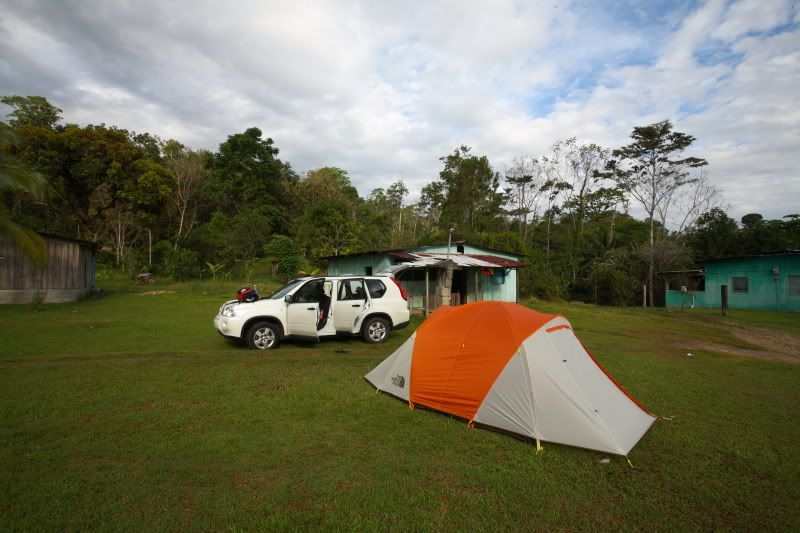
The next day, I awake in a fury of heat….the sun had risen high enough that it was radiating directly into our tent. I roll out to find breakfast being prepared for us, a traditional Panamainan breakfast composed of patacones (plantains pounded into pancake like discs and fried), home made bread, and meat fried with onions and peppers. To top it all off, some amazing, fresh Panamanian coffee. I’ve always been a cream and sugar type of guy – that will change when you have truly fresh coffee.
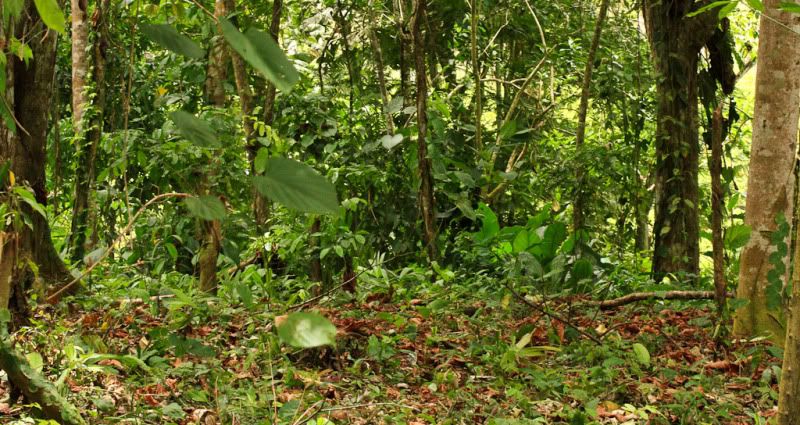
After taking some time to wake up and digest our wonderful meal we start to discuss our options for the rest of the day. The area we spent exploring the night before would be promising, but our guide advised us that he had a contact that might be able to direct us to a bushmaster. We decided to go and setup our trek for that evening and see what we could find along the way. Piling in the car we head back southeast from Changuinola a few miles, through the ragged highway system that links these Caribbean towns to the rest of Panama. After some time of waiting on the road construction, traffic holdups and trying to locate the proper road, we finally turn down a small unmarked two lane road that begins winding sharply around a hillside. From the car on this overcast day we spot a three-toed sloth in the treetops (what will be one of ten (yes ten!) individuals), slowly making its way from one limb to the next. The road is terribly washed out from a few of the initial rains signaling the end of the dry season. We navigate around large rocks lying in the road, severe cracks in the pavement until we come to a more lowland area. At one point, we’re trying to traverse a washout in our Nissan XTrail that would likely need more ground clearance, a suspension lift, and maybe some all terrain tires. Finally we get onto what looks like a normal looking dirt road with far less issues. As we drive past the lowland fields and scattered forests, there is an ever present chattering coming from the trees. I know I’ve heard this sound before and it takes me a few moments to realize the sound broadcasting from the forest edge is that of the strawberry or flaming poison dart frog, Oophaga pumilio .
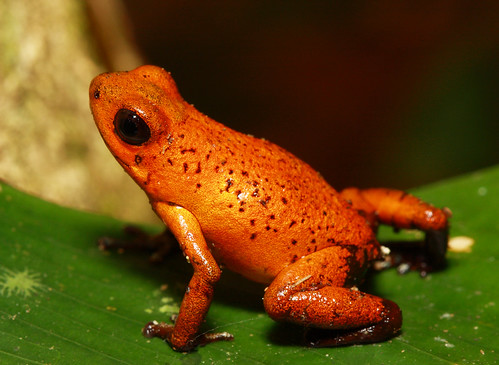
We eventually arrive at a small, elevated house in the middle of the jungle. I’m introduced to a man named Lalo, who was an acquaintance of our guide, familiar with the area and the animals we were interested in seeing. His wife and two children also come to greet us, and we sit down to discuss the plan for our evening hike. His wife offers us coffee, a strong aroma and as fresh as you could ever imagine coffee being in a place like this. His son is playing with a box of young parrots, rescued from an area that was being cleared for agricultural purposes. Our guide begins to explain why we are visiting the country, what we’ve encountered so far, and what we would like to attempt to find on our night hike. In the background we hear the same chattering of pumilio, some of which appear to be very close. We tell him that we also are interested in the small frogs from the area. He steps away for a moment and returns with something that astounds me. He presents us with a few laminated sheets, with various forms of dendrobatid frogs and venomous snakes, with short descriptions of each species.
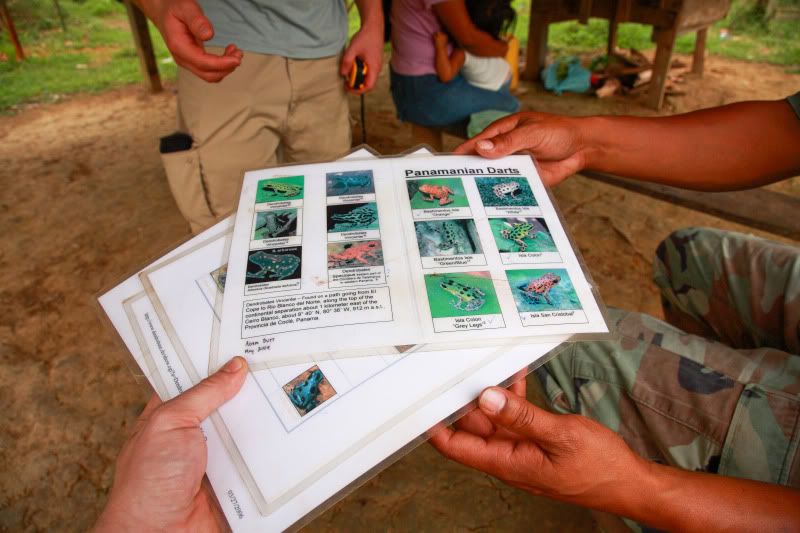
Visitors apparently years prior to our visit had left these guides with him, explaining that they would offer him money for these species of interest. His impression was that we were there to collect or buy various herps to take back with us! We explained to him that we only wanted to photograph such animals. He recognized that our attention repeatedly shifted back across the road to the sounds of the frogs. He got up and told us to ‘follow me.’
Within 20 feet of the road, opposite to his house, Lalo began pointing out frogs…..there were Dendrobates auratus amongst the leaf litter unlike any I had ever seen. Flaunting the well known green and black coloration, these frogs were enormous, bigger than any dendrobatid frog I’d seen in captivity. Side by side with the auratus were little red and orange Oophaga pumilio that we encountered – hopping about. These frogs are known as the ‘Alimarante’ morph, named for a town just southeast of Changuinola. I was amazed at the amount of variation found within the dozen or so frogs in such a small area - red with grey
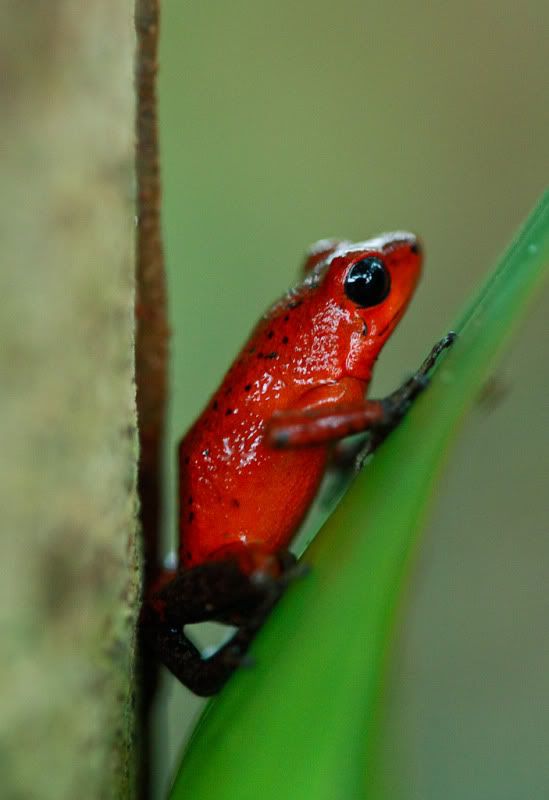
legs, orange with black legs, solid orange with black flecks, all the same morph. After running around and photographing our first pumilio, we went back over to Lalo’s house to avoid the sudden downpour of rain and discuss our evening plans. Lalo knew of some local areas that would be probable bushmaster habitat, and that there had been sightings in the recent weeks prior to our arrival.
With our plan set and some cool finds already that day, we headed back to Changuinola to prepare for what would be one of the most memorable experiences of my life – for many reasons…
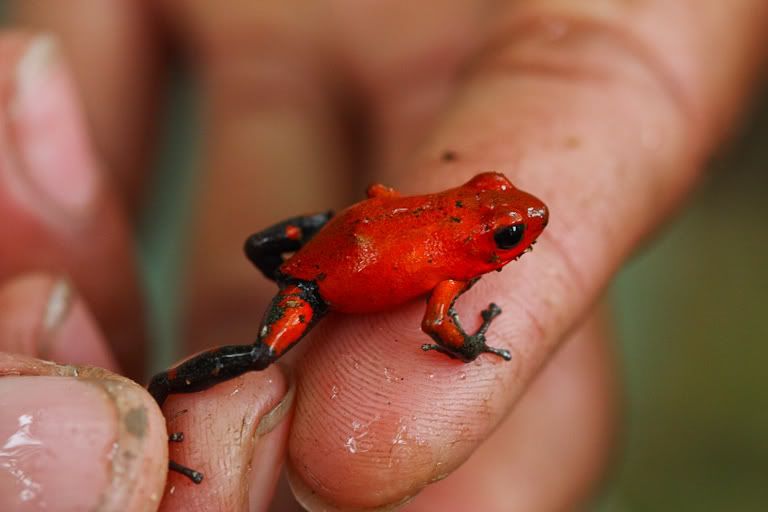
No comments:
Post a Comment